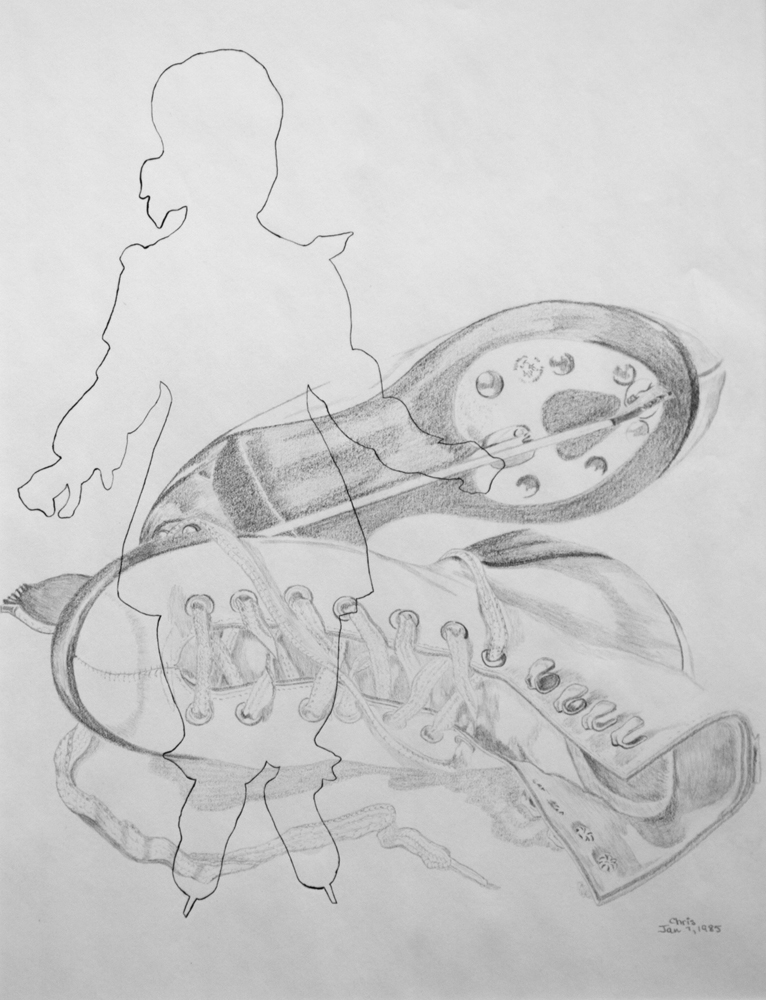For fifteen years I attempted to draw and trace perfect circles on the ice without a compass. Sometimes, for three hours in a row six days a week all year round I would cut and trace these lines in what needed to be perfectly clean edges with intricate turns exactly placed at the top of circles or in the centre. It was mind-numbing work. Then, I would warm up for free skating with long, free strokes round and round the ice. Fast. Hair blowing. Often I felt as though I was flying and would frequently dream in my sleep about doing multiple spins with ease and joy up around the rafters of the arena, landing softly on a bent knee. In reality, I was not a natural jumper or spinner but I could make relaxed, gliding, graceful strokes on deep edges. Throughout the years, taking tests and competing were major events, and judgment was all-consuming.
It only came to me after reading about Joan Mitchell in Blue Territory how my skating strokes also parallel my brush strokes and that I had poured my emotions into both.
She loved the turns, the swerving curves, the elegant arcs; on the ice she is all fleetness and grace … Ten years later, in New York, DeKooning will tell her that some of his happiest childhood memories are of skating along the canals around Rotterdam. Twenty-five plus years later … she will more than once remember these times on the ice, this feeling, these movements, and the messages that she cut with her blades, a choreography of her own – all of which are not unlike what she experiences when she paints, brushing a broad, continuous swath across a canvas that is much higher and wider than she is tall.
p. 22, 23 of Blue Territory, by Robin Lippincott


Art photography by Dennis Campbell, Bonnie Fox. Chris Gosso, and Eric Sutton.
Web design by Be Visible Web Design

